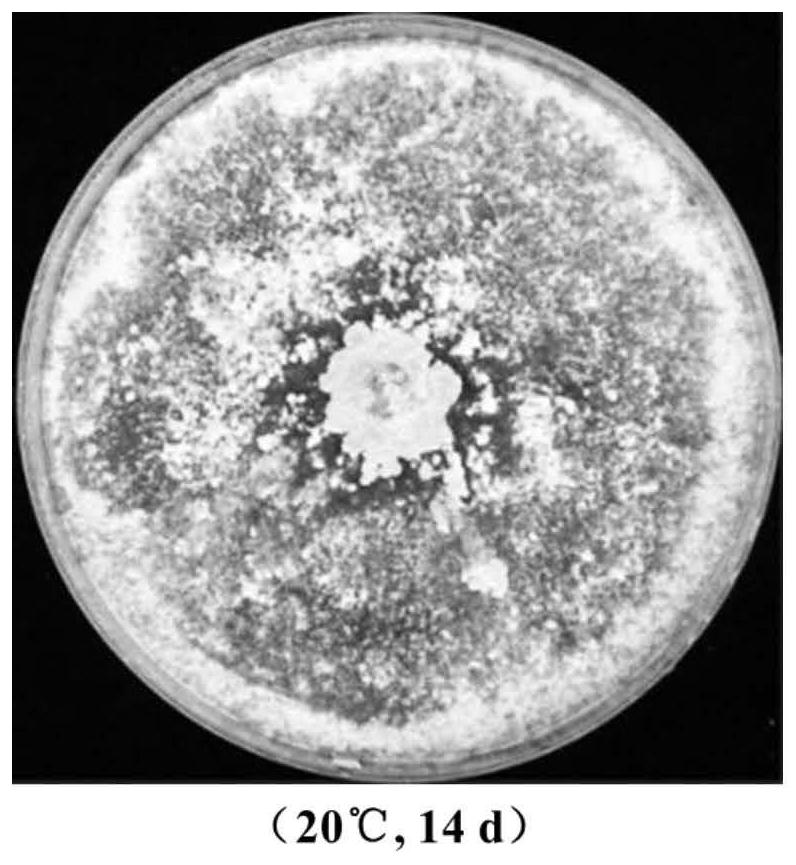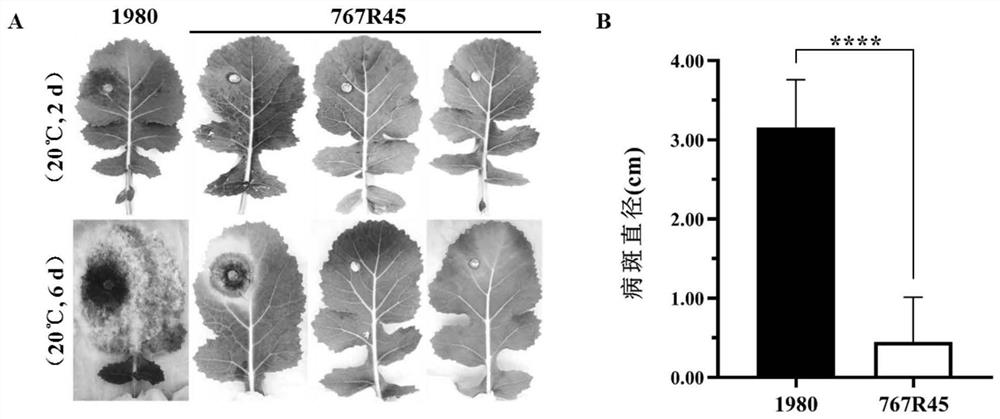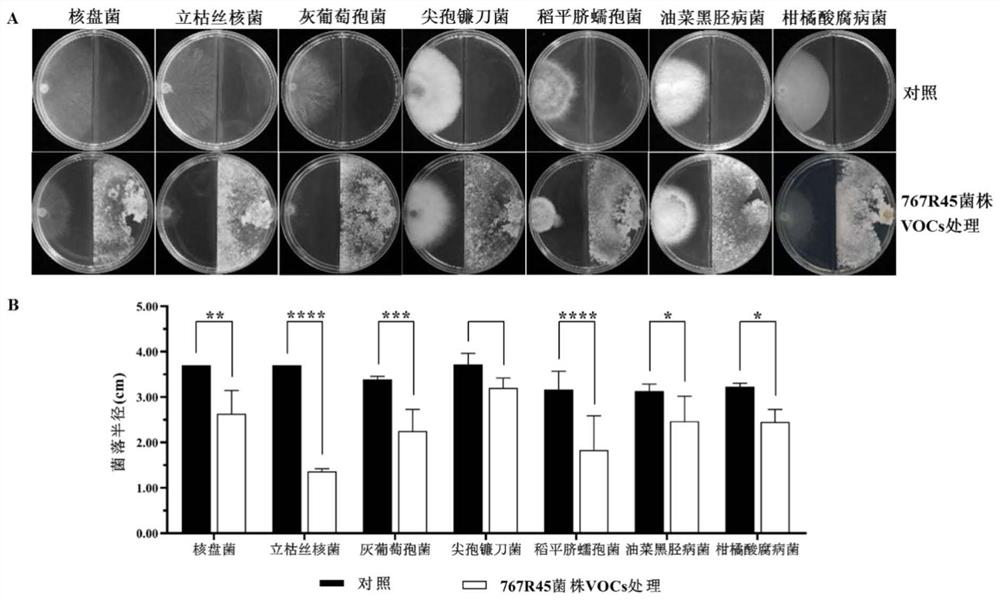A low-virulence strain of Sclerotinia sclerotiorum carrying virus and its application in biological control
A technology for Sclerotinia sclerotiorum, plant pathogenic bacteria, applied in the fields of pest control, microorganism-based methods, chemicals for biological control, etc., can solve problems such as difficulties in plant disease control
- Summary
- Abstract
- Description
- Claims
- Application Information
AI Technical Summary
Problems solved by technology
Method used
Image
Examples
Embodiment 1
[0036] Screening, identification and characteristics of the low-virulence strain 767R45 of Sclerotinia sclerotiorum
[0037] 1) Screening and identification of strains of S. sclerotiorum low-virulence strain 767R45
[0038] S. sclerotiorum 767R45 was isolated from the sclerotia in rapeseed stalks of Sclerotinia sclerotiorum in Sichuan Province. Due to the abnormal shape of the original strain 767, high-throughput sequencing was carried out on the strain and it was found that the original strain 767 carried 6 different ssRNA viruses. However, due to the slow growth of the original strain 767, protoplast regeneration was carried out on it, and finally obtained A protoplast regeneration strain 767R45 with moderate growth rate and biocontrol potential.
[0039] The mycelia of 767R45 cultured for 5 days were scraped off from the PDA medium covered with cellophane, put into a mortar, added an appropriate amount of liquid nitrogen and ground thoroughly, and the total DNA of the 767R...
Embodiment 2
[0055] Volatile Gas Produced by Sclerotinia Sclerotiorum 767R45 Strain Inhibits Mycelia Growth of Various Pathogenic Fungi
[0056] Using two different methods, the two-partition dish method and the plate buckle method, the volatile gas produced by the sclerotinia 767R45 strain was used to analyze the effect of the phytopathogenic fungi Sclerotinia sclerotiorum, Rhizoctonia solani, Botrytis cinerea, Fusarium oxysporum , Helminthosporium oryzae, black shank of rapeseed and sour rot of citrus.
[0057] 1) Two-partition plate method: first inoculate mycelial blocks of Sclerotinia sclerotiorum 767R45 strain on one side of a 90mm PDA two-partition plate, and after culturing at 20°C for 5 days, inoculate fresh mycelial blocks of pathogenic fungi on the other side, and seal them with a parafilm. Each treatment was repeated three times, and the blank PDA was used as a control, and cultured at 20°C until the control was half-covered, the diameter of the pathogenic fungal colony was mea...
Embodiment 3
[0068] VOCs produced by Sclerotinia 767R45 strain inhibited the occurrence of strawberry gray mold, navel orange penicillium and navel orange green mold during storage
[0069] Select fresh, healthy fruits with the same size, wash them twice with distilled water, and then dry the surface naturally. Place strawberry fruits in a petri dish with a diameter of 60 mm and inoculate botrytis cinerea mycelia. Add 10 μL dropwise to a concentration of 2×10 7 spores / mL of Penicillium italicum / Penicillium digitatum spore suspension. The 400g solid culture (the sorghum solid culture of sclerotinia 767R45 bacterial strain) prepared by embodiment 1 is placed on the bottom of the desiccator, then puts into a ceramic partition, and the strawberry / navel orange that has been inoculated with the pathogenic bacteria spore liquid is put into the drying immediately Apply vaseline on the edge of the lid, twist it and close the lid tightly to prevent gas leakage, put the same mass of sterile sorghum ...
PUM
 Login to View More
Login to View More Abstract
Description
Claims
Application Information
 Login to View More
Login to View More - R&D
- Intellectual Property
- Life Sciences
- Materials
- Tech Scout
- Unparalleled Data Quality
- Higher Quality Content
- 60% Fewer Hallucinations
Browse by: Latest US Patents, China's latest patents, Technical Efficacy Thesaurus, Application Domain, Technology Topic, Popular Technical Reports.
© 2025 PatSnap. All rights reserved.Legal|Privacy policy|Modern Slavery Act Transparency Statement|Sitemap|About US| Contact US: help@patsnap.com



